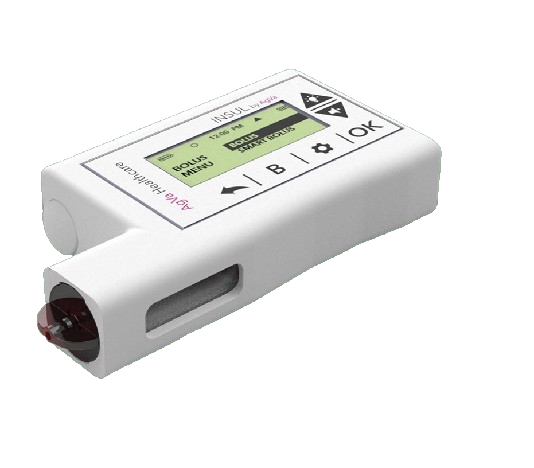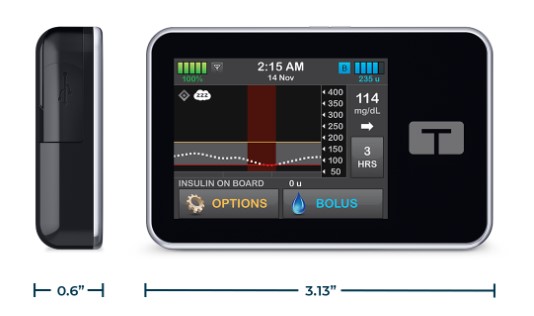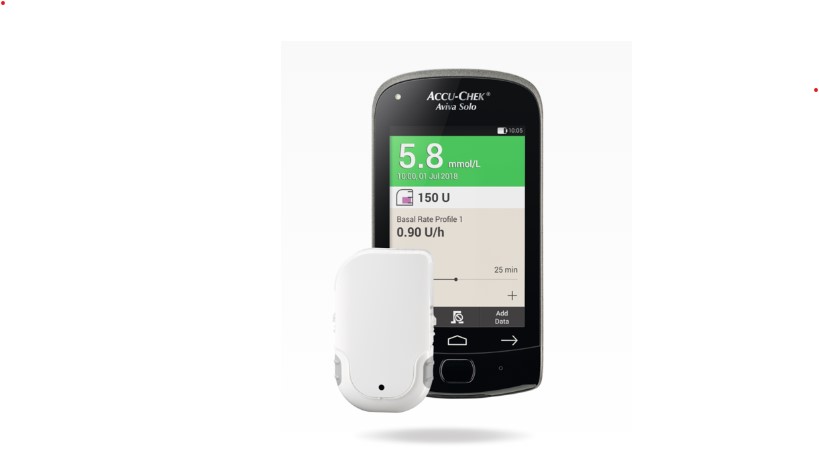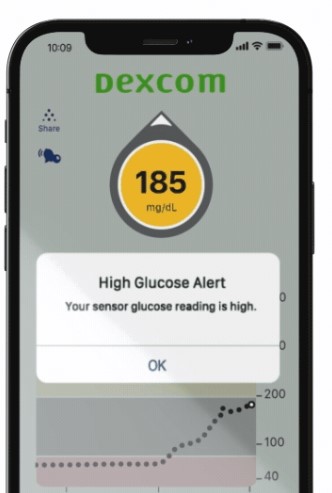
How To Choose The Best Insulin Pump For Diabetes Management
Readers like you help support Lifespectrum360.com. When you purchase using links on our site, we may earn an affiliate commission. Read More.
As a diabetes patient or a caregiver for someone with diabetes, the search for the best insulin pump feels like going through a maze blindfolded. Every choice holds weighty consequences for our health and well-being. In the vast sea of options, each promising to be the “ultimate solution,” how do we find out which is truly the best?
Dr Biswaranjan Jena had discussed about how 7 lifestyle changes and Yoga for diabetes act as a first line of defense and help control diabetes.This blog post is intended to find a lifeline in a sea of uncertainty of managing blood sugar levels, the frustration of constant injections, and the fear of complications. Here, we will try to find a device that acts as a symbol of hope, that promises to revolutionize diabetes management and breathe a newfound freedom into lives. We will unravel the complexities of insulin pumps, understand the medical jargons and uncover the hidden gems that hold the key to a brighter, healthier future. Let’s dive deep into the details, explore the options, and emerge with clarity and confidence in our decision.

Dr Biswaranjan Jena, MBBS, PDCC (Diabetes)
Dr Biswaranjan Jena, MD(Medicine) DM (Cardiology) is a Senior Interventional Cardiologist with more than 15 years of experience. He has done PDCC (Diabetes) from CMC, vellore. He is a Fellow of the European Society of Cardiology (FESC) and Fellow of the Society for Cardiovascular Angiography and Interventions (FSCAI). He can be contacted at - Ashwini Hospital, 1, CDA Sector 7, Cuttack, Odisha 753014.
how to choose the best insulin pump
what are insulin pumps
Insulin pumps are primarily used by individuals with type 1 diabetes (because body stops producing insulin) , although some people with type 2 diabetes who require intensive insulin therapy may also benefit from using insulin pumps. Insulin pumps are small electronic devices designed to deliver insulin continuously throughout the day. They are about the size of a pager or small cell phone and are worn externally, typically attached to a belt, pocket, or clothing. These devices are primarily used by individuals with diabetes who require insulin therapy to manage their blood sugar levels.

Insulin pumps consist of several key components:
- Reservoir: A cartridge or reservoir holds the insulin and is connected to the pump.
- Pump: The pump is the main unit that houses the electronics and mechanics responsible for delivering insulin.
- Infusion Set: A thin, flexible tube called an infusion set is connected to the pump and inserted under the skin to deliver insulin into the fatty tissue (subcutaneous tissue).
- Controls: The pump is equipped with controls and a screen to allow the user to program insulin delivery settings, monitor insulin doses, and interact with the device.
Unlike traditional insulin injections, which require multiple daily shots, insulin pumps deliver insulin continuously in small doses, mimicking the natural release of insulin by the pancreas. This continuous delivery provides a more steady and precise control of blood sugar levels throughout the day.
How insulin pumps work in managing diabetes
Insulin pumps are small, pager-sized devices that deliver insulin continuously throughout the day. Insulin pumps work by delivering insulin continuously at a programmed basal rate and providing additional insulin doses (boluses) to cover meals or correct high blood sugar levels. Here’s how insulin pumps function in managing diabetes:
Continuous Insulin Delivery: Unlike traditional insulin injections, which require multiple daily shots, insulin pumps deliver insulin continuously through a tiny catheter inserted under the skin. This continuous delivery mimics the natural release of insulin by the pancreas, providing a more stable blood sugar level throughout the day.
Basal and Bolus Insulin: Insulin pumps deliver two types of insulin: basal and bolus. Basal insulin is delivered continuously at a low rate to meet the body’s basic insulin needs between meals and overnight. Bolus insulin is delivered in larger doses to cover meals and correct high blood sugar levels. With an insulin pump, you have the flexibility to adjust both basal and bolus insulin doses according to your individual needs.
Programming and Adjustments: Insulin pumps are programmed with personalized insulin delivery settings based on factors such as your weight, insulin sensitivity, and lifestyle. These settings can be adjusted by you or your healthcare provider to optimize blood sugar control. For example, you can program different basal rates for different times of the day or adjust bolus doses to account for changes in meal size or physical activity.
Carbohydrate Counting and Bolus Wizard: Many insulin pumps are equipped with features like carbohydrate counting and bolus calculators to simplify mealtime insulin dosing. With these features, you can enter the amount of carbohydrates in your meal, and the pump calculates the appropriate bolus insulin dose based on your insulin-to-carbohydrate ratio and blood sugar level.
Integration with Continuous Glucose Monitoring (CGM): Some insulin pumps can be integrated with CGM systems, allowing for real-time monitoring of blood sugar levels and automatic adjustments to insulin delivery. This integration provides greater insight into blood sugar trends and helps prevent highs and lows by adjusting insulin doses accordingly.
Site Rotation and Maintenance: To ensure optimal insulin absorption and minimize the risk of complications, it’s important to rotate infusion sites regularly and follow proper site care procedures. Insulin pump manufacturers provide guidance on site rotation and maintenance to help prevent issues such as infection or insulin absorption problems.
Types Of Insulin Pumps Available In The Market
There are several types of insulin pumps available in the market, each with its features, advantages, and limitations. The main types of insulin pumps include:
- Traditional Insulin Pumps: These pumps are worn externally and deliver insulin through a thin tube (infusion set) inserted under the skin. They typically use rapid-acting insulin and allow for continuous basal insulin delivery and bolus doses.
- Patch Pumps: Patch pumps are compact, tubeless insulin pumps that adhere directly to the skin. They are discreet and offer more freedom of movement compared to traditional pumps. Patch pumps use a pre-filled insulin reservoir and are discarded after a certain period (e.g., 2-3 days) when the insulin runs out.
- Hybrid Closed-Loop Systems: Some insulin pumps are integrated with continuous glucose monitoring (CGM) systems to create hybrid closed-loop systems, also known as artificial pancreas systems. These systems automatically adjust insulin delivery based on real-time CGM data, helping to maintain stable blood sugar levels without the need for constant manual intervention.
Factors To Consider In Choosing The Best Insulin Pump

A girl wearing an insulin pump
When selecting the best insulin pump for diabetes management, several key factors should be taken into consideration. These factors can vary depending on individual needs, lifestyle, and preferences. Here’s a detailed explanation of each factor:
Lifestyle and Daily Activities:
- Age is a critical factor in determining the most suitable insulin pump for individuals managing diabetes. For children and adolescents with diabetes, insulin pumps with simplified interfaces, colorful designs, and safety features to prevent accidental button presses or insulin overdoses. For adolescents and young adults, Pumps with smaller form factors, sleek designs, and wireless connectivity options are favored for seamless integration into their active lifestyles and social environments. Insulin pumps that offer smartphone apps for remote monitoring and bolus dosing appeal to tech-savvy individuals, providing discreet management options during school, work, or social activities.
- Consider how the insulin pump will fit into your daily routine and lifestyle. E.g. If you are an athlete or you have a physically demanding job, insulin pumps that offer customizable basal rates are crucial. These pumps allow for adjustments in basal insulin delivery throughout the day to accommodate changes in activity levels and prevent hypoglycemia or hyperglycemia.
- Look for insulin pumps that offer features such as waterproofing, durability, and flexibility to accommodate various activities and environments. E.g. If you are a swimmer or athlete, you would require insulin pumps that are water-resistant and durable. Pumps designed to withstand exposure to water and rough handling are essential for maintaining continuous insulin delivery during various activities.
- Some insulin pumps are designed to be discreet and wearable under clothing, while others may be more noticeable. Choose a pump that aligns with your comfort level and preferences.
Insulin Delivery Method: Insulin pumps deliver insulin using different methods, such as continuous subcutaneous insulin infusion (CSII) or patch pumps.
- CSII pumps use a thin tube (infusion set) inserted under the skin to deliver insulin, providing precise control over insulin doses and infusion rates.
- Patch pumps are tubeless and adhere directly to the skin, offering greater freedom of movement and convenience.
However, they may have limitations in terms of insulin reservoir capacity and infusion set options in both cases.
- Pump Features and Technology: Evaluate the insulin pump’s features and technology to ensure they meet your specific needs and preferences.
- Look for pumps with advanced features such as customizable basal rates, bolus calculators, integrated continuous glucose monitoring (CGM) systems, and connectivity with smartphone apps or other devices.
- Consider the user interface and ease of use, including remote monitoring and control capabilities. Caregivers or healthcare providers can remotely access pump data, adjust settings, and provide support, enhancing management flexibility and peace of mind during periods of increased activity.
- Pump Features and Technology: Evaluate the insulin pump’s features and technology to ensure they meet your specific needs and preferences.
Size and Design: Insulin pumps come in various sizes and designs, ranging from compact and discreet to larger and more noticeable.
- Consider factors such as portability, comfort, and aesthetics when choosing the size and design of the pump.
- Some pumps offer customization options, such as interchangeable covers or color choices, allowing you to personalize your pump to suit your style.
Cost and Insurance Coverage: Insulin pumps can be a significant investment, so it’s important to consider the upfront costs as well as ongoing expenses.
- Compare the costs of different pump models, including the pump itself, infusion sets, reservoirs, and other supplies.
- Check with your insurance provider to determine coverage for insulin pump therapy, including pump acquisition, supplies, and maintenance. Some insurance plans may have specific requirements or restrictions regarding pump coverage.
Support and Training:
- Choose an insulin pump that comes with comprehensive support services and training resources.
- Look for pump manufacturers that offer training programs for healthcare providers and patients, as well as customer support helplines or online forums for troubleshooting and assistance.
- Consider the availability of educational materials, instructional videos, and user manuals to help you learn how to use the pump effectively and safely.
By carefully considering these factors, you can make an informed decision when choosing the best insulin pump for your diabetes treatment needs. Consulting with your healthcare provider or diabetes educator can also provide valuable guidance and support in selecting the most suitable pump for you.
Some of the best insulin pumps available in the market
Pros –
- Advanced Hybrid Closed-Loop System: The MiniMed 770G features hybrid closed-loop technology, which automatically adjusts basal insulin delivery based on real-time sensor glucose readings. This can help improve blood glucose control and reduce the risk of hypoglycemia.
- Customizable Settings: The pump allows users to customize settings such as target glucose levels, insulin sensitivity factors, and insulin-to-carb ratios, offering flexibility to tailor therapy to individual needs.
- Predictive Alerts: The system provides predictive alerts for impending hypoglycemia or hyperglycemia, allowing users to take proactive measures to manage their blood sugar levels.
- Remote Monitoring and Carelink Connect: Caregivers or healthcare providers can remotely monitor the user’s glucose levels and pump data through the Carelink Connect platform, facilitating remote support and management.
- Compatibility with Medtronic Guardian Sensor 3: The MiniMed 770G is compatible with the Guardian Sensor 3, a highly accurate and reliable continuous glucose monitoring (CGM) system, providing real-time glucose readings for better decision-making.
- Regulatory Approval: Medtronic MiniMied 770G insulin pump has received Food and Drug Administration (FDA) approval in September 2020 for type- 1 diabetic patients.
- Limited Connectivity Options: While the pump offers Bluetooth connectivity for data transmission to compatible devices, it may have limited compatibility with third-party devices or apps compared to other systems.
- Calibration Requirements: The Guardian Sensor 3 CGM system requires periodic calibration with fingerstick blood glucose measurements, which can be cumbersome for some users.
- User Interface: Some users may find the pump’s interface and menu navigation less intuitive compared to other insulin pumps on the market.
- Cost and Insurance Coverage: The initial cost of the MiniMed 770G system, including the pump, CGM sensors, and accessories, may be prohibitive for some individuals. Additionally, insurance coverage and reimbursement for the system may vary.
- Wearability and Design: While the pump is compact and wearable, some users may find the design less discreet or comfortable compared to other insulin pumps available.
Pros –
- Basal-IQ Technology: The t:slim X2 features Basal-IQ predictive low glucose suspend technology, which automatically adjusts insulin delivery to help prevent hypoglycemia without requiring user intervention.
- Dexcom Integration: The pump is compatible with the Dexcom G6 continuous glucose monitoring (CGM) system, allowing users to view real-time glucose data directly on the pump’s touchscreen display.
- Slim and Sleek Design: The t:slim X2 has a slim and modern design, making it discreet and comfortable to wear under clothing or in various settings.
- Touchscreen Interface: The pump’s intuitive touchscreen interface simplifies navigation and programming, enhancing user experience and ease of use.
- Remote Software Updates: Tandem offers remote software updates for the slim X2, allowing users to access new features and improvements without needing to replace the pump hardware.
- Integration with Control-IQ Technology: The pump is compatible with Control-IQ technology, an advanced hybrid closed-loop system that automatically adjusts insulin delivery based on CGM readings to maintain stable blood glucose levels.
- Cartridge Capacity: The pump’s cartridge capacity may be limited compared to other insulin pumps, requiring more frequent refills for users with higher insulin requirements.
- Limited Connectivity Options: While the pump offers Bluetooth connectivity for data transmission to compatible devices, it may have limited compatibility with third-party devices or apps compared to other systems.
- Calibration Requirements: The Dexcom G6 CGM system requires periodic calibration with fingerstick blood glucose measurements, which can be cumbersome for some users.
- Cost and Insurance Coverage: The initial cost of the slim X2 system, including the pump, CGM sensors, and accessories, may be prohibitive for some individuals. Additionally, insurance coverage and reimbursement for the system may vary.
- Software Compatibility: Users may encounter compatibility issues with certain operating systems or software versions when updating the pump’s firmware or using the Tandem Device Updater tool.
Pros –
- Tubeless Design: The patch pump design eliminates the need for tubing, providing users with greater freedom of movement and discretion.
- Customizable Insulin Delivery: Users can program personalized basal rates and bolus doses to match their individual insulin needs and lifestyle.
- Integrated Blood Glucose Meter: The pump features an integrated blood glucose meter, allowing users to conveniently check their blood sugar levels directly on the pump device.
- Bolus Advisor: The pump includes a bolus advisor function, which helps users calculate accurate bolus doses based on factors such as current blood glucose levels, carbohydrate intake, and insulin sensitivity.
- Remote Control Option: Users can control the pump remotely using a smartphone app, providing added convenience and discretion for insulin delivery adjustments.
- Waterproof: The pump is waterproof, allowing users to wear it during activities such as swimming, showering, or exercising without the need for removal.
- Ease of Use: The pump features a user-friendly interface and intuitive navigation, making it easy for users to program and operate.
- Cost: The initial cost of the Accu-Chek Solo Micropump System, including the pump device and supplies, may be prohibitive for some individuals.
- Infusion Set Changes: Users need to change the infusion set regularly, which may be cumbersome or inconvenient for some individuals.
- Skin Irritation: Prolonged use of the infusion set may lead to skin irritation or allergic reactions at insertion sites, requiring careful site rotation and monitoring.
- Dependency on Device: Insulin pump users rely on the device for insulin delivery, and malfunctions or pump failures can pose risks if not addressed promptly. Having backup insulin and syringes available is essential in case of pump failure.
- Learning Curve: Transitioning to insulin pump therapy may require education and training to learn how to use the device effectively, including programming basal rates, calculating bolus doses, and managing infusion sets.
- Compatibility: The pump’s compatibility with other diabetes management devices or software platforms may be limited compared to other insulin pump options.
Pros:
- High Accuracy: The Dexcom G6 CGM system is known for its high level of accuracy in measuring blood glucose levels, providing users with reliable and precise glucose readings.
- Real-Time Monitoring: The system offers real-time monitoring of glucose levels, allowing users to track their blood sugar levels continuously throughout the day without the need for fingerstick tests.
- Customizable Alerts: Users can set customizable alerts for high and low blood sugar levels, providing early warnings to take corrective action and prevent hyperglycemia or hypoglycemia.
- Integration with Insulin Pumps: The Dexcom G6 CGM system integrates seamlessly with various insulin pumps, allowing for automated insulin delivery based on real-time glucose readings for improved management of blood sugar levels.
- Long Sensor Wear: The sensor of the Dexcom G6 CGM system has a wear duration of up to 10 days, reducing the frequency of sensor changes and minimizing interruption to glucose monitoring.
- Ease of Use: The system features a user-friendly interface and simple insertion process for the sensor, making it easy for users to start and maintain continuous glucose monitoring.
- Calibration Requirements: While the Dexcom G6 CGM system eliminates the need for routine fingerstick calibrations, occasional calibrations may be required to ensure accuracy, especially during the initial startup period or when experiencing sensor issues.
- Cost: The Dexcom G6 CGM system can be expensive, including the initial purchase cost of the receiver and sensors, as well as ongoing expenses for sensor replacements and accessories.
- Skin Irritation: Some users may experience skin irritation or allergic reactions at the sensor insertion site, requiring careful site rotation and monitoring.
- Signal Loss: Users may experience occasional signal loss between the transmitter and receiver, resulting in gaps in glucose data or missed alerts.
- Compatibility: The Dexcom G6 CGM system may have limited compatibility with certain smartphones or devices, limiting options for data sharing and remote monitoring.
Each insulin pump system has its own unique features, advantages, and limitations. It’s important to consider your individual preferences, lifestyle, and healthcare needs when choosing the right pump for you. Consulting with your healthcare provider or diabetes educator can also provide valuable guidance in selecting the best insulin pump system for your diabetes management plan.
conclusion
In conclusion, the decision to choose the best insulin pump is not merely about selecting a medical device; it’s about getting a transformative tool that will help individuals with diabetes to take control of their health and live life to the fullest. With the right insulin pump, tailored to your unique needs and preferences, you can have a better blood sugar management, increased flexibility, and enhanced quality of life.
Imagine the freedom of movement and flexibility to pursue your passions without the constant interruption of multiple daily injections. Envision the peace of mind that comes from continuous glucose monitoring and automated insulin delivery, providing real-time insights and proactive adjustments to keep your blood sugar levels in check.
Remember, you deserve the best – the best technology, the best support, and the best chance at living a vibrant, fulfilling life despite diabetes. Invest in yourself, invest in your health, and embrace the possibilities that lie ahead with the best insulin pump by your side. take the leap, do your research, consult with healthcare professionals, and choose the right insulin pump that aligns with your goals and aspirations.
diabetes doesn’t define you – you define it.
Trending Blogs
FAQs
Can I still use an insulin pump if I have limited dexterity or vision?
Yes, there are insulin pumps designed with features such as larger buttons, clear displays, and audible alerts to accommodate individuals with limited dexterity or vision. Discuss your specific needs with your healthcare provider to find a suitable option.
Are there insulin pump options for children or adolescents with diabetes?
Yes, there are insulin pumps specifically designed for children and adolescents, offering features such as colorful designs, customizable settings, and educational resources tailored to younger users.
What if I have concerns about the cost of insulin pump therapy?
Many insulin pump manufacturers offer financial assistance programs, payment plans, and support resources to help make pump therapy more affordable. Explore your options and discuss financial concerns with your healthcare team.
Can I still use an insulin pump if I have skin sensitivities or allergies?
If you have skin sensitivities or allergies, discuss your concerns with your healthcare provider. They can recommend strategies for managing skin irritation, such as using barrier products or trying different infusion sets or adhesives.
Is it possible to switch insulin pump brands if I'm unhappy with my current pump?
Yes, it’s possible to switch insulin pump brands, although there may be considerations such as compatibility with existing supplies or data transfer. Discuss your reasons for wanting to switch with your healthcare provider to explore alternative options.
What if I experience technical issues with my insulin pump?
If you experience technical issues with your insulin pump, contact the manufacturer’s customer support or technical assistance line for troubleshooting guidance. It’s essential to address any issues promptly to ensure continued insulin delivery and management.
Can I still travel with an insulin pump?
Yes, you can travel with an insulin pump. It’s important to plan and pack extra supplies, including insulin, infusion sets, and batteries. Be aware of security screening procedures for medical devices at airports and other travel checkpoints.
Are there any lifestyle restrictions with insulin pump therapy?
Insulin pump therapy offers flexibility and freedom in managing diabetes, allowing you to maintain your usual lifestyle and activities. However, it’s essential to be mindful of factors such as pump placement during physical activities or exposure to water.
How often do I need to replace my insulin pump?
Insulin pumps typically have a lifespan of several years, but individual components such as infusion sets, cartridges, and batteries will need to be replaced regularly. Follow the manufacturer’s recommendations for pump maintenance and replacement schedules.




4 thoughts on “How To Choose The Best Insulin Pump for Diabetes Management”
выведение из запоя дешево vyvod-iz-zapoya-4.ru .
вывод из запоя дешево москва вывод из запоя дешево москва .
https://jerezlecam.com/pag/code-promo-1win-gratuit__4.html
code promo pour melbet